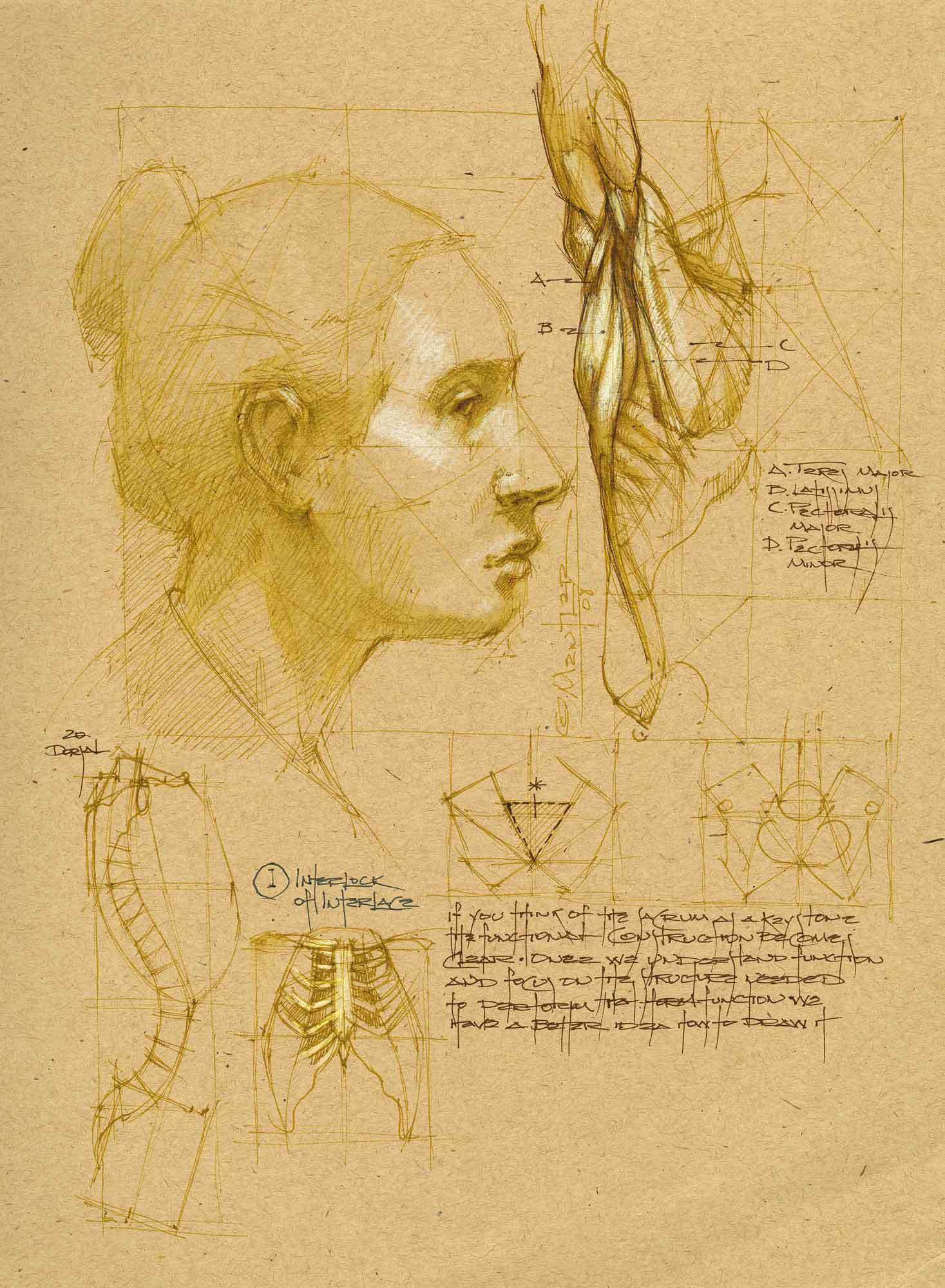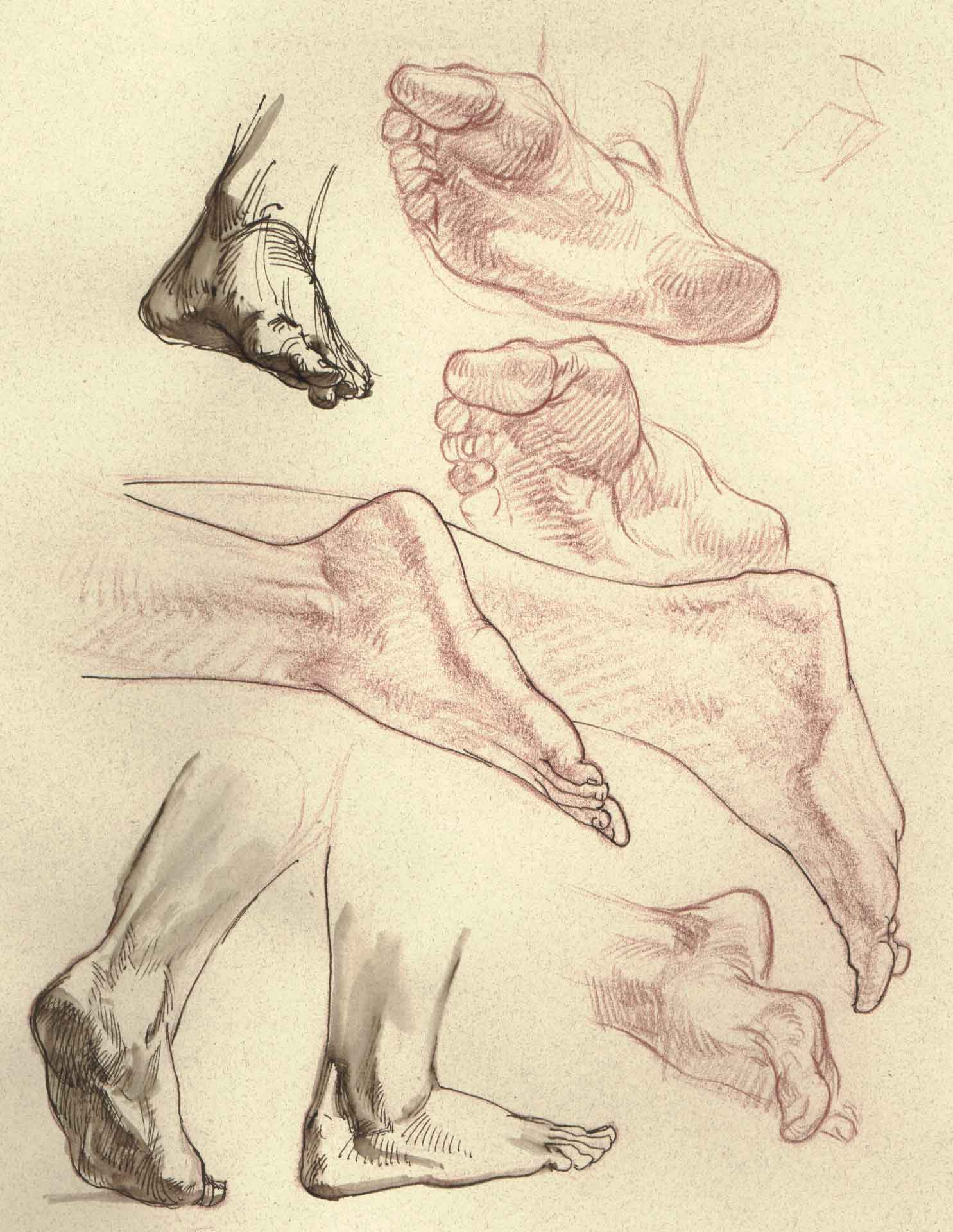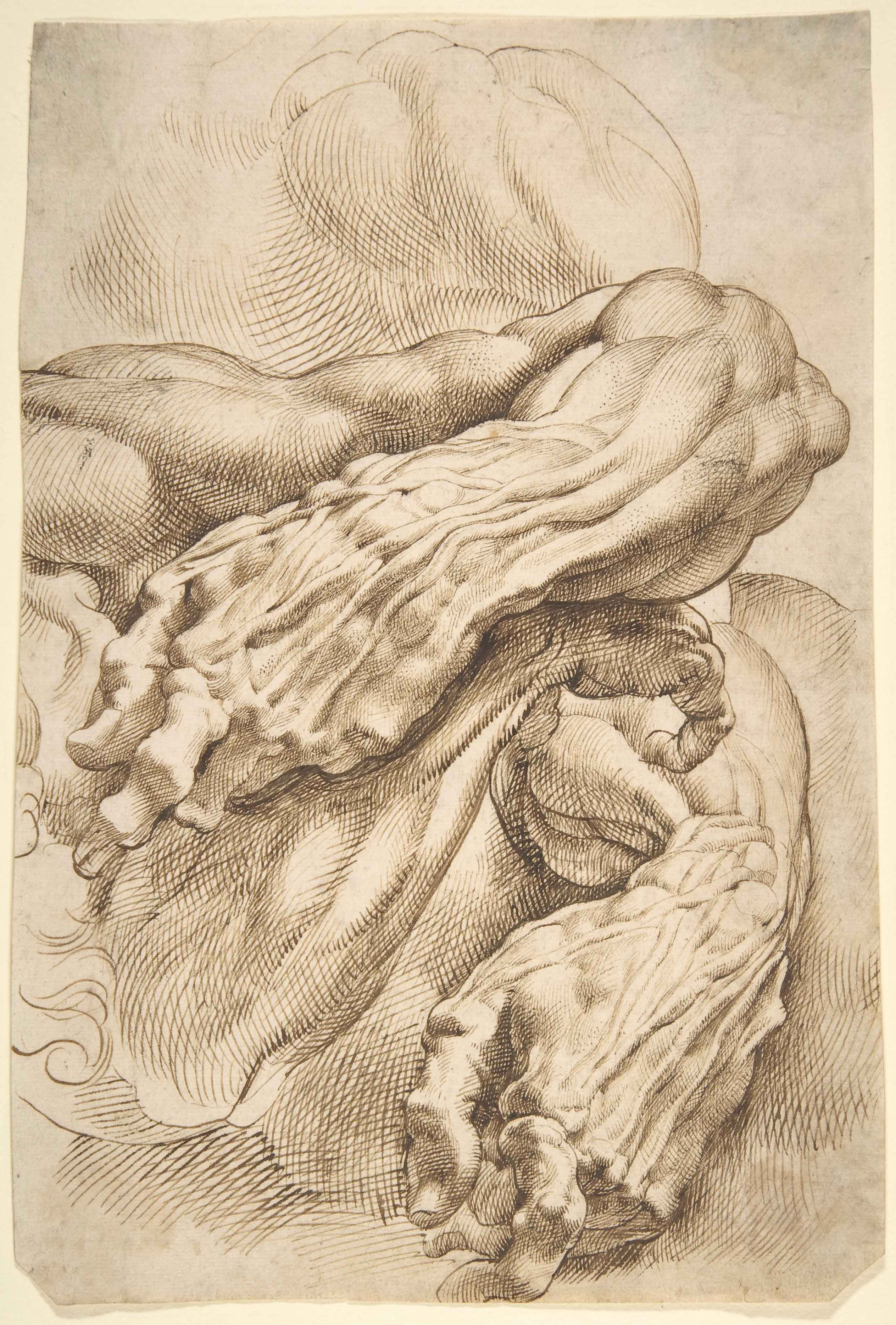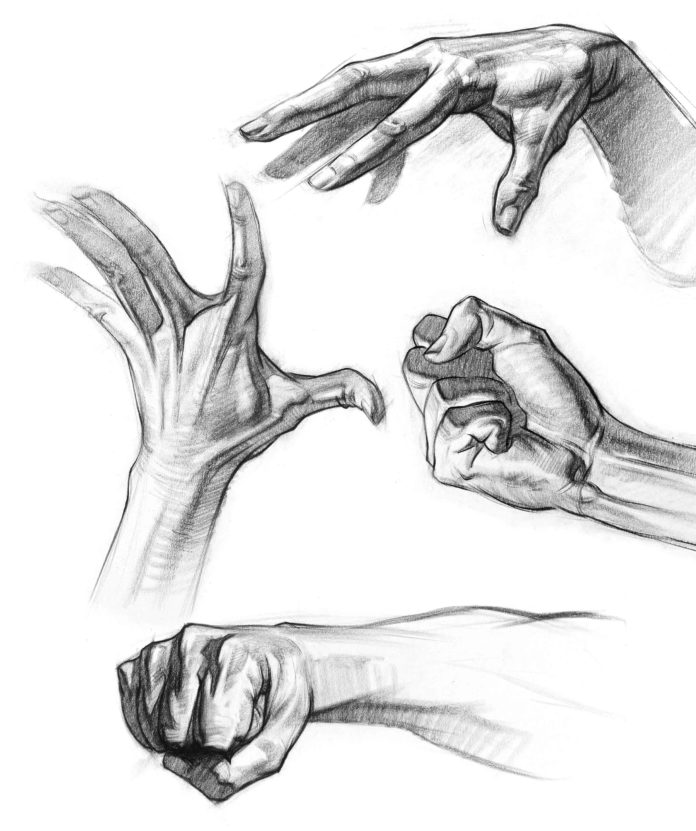Drawing heads, hands, and feet often intimidates new artists. In this excerpt from “Figure Drawing Atelier,” Juliette Aristides shares sketches that will help you both simplify the process and inspire you to practice.
To copy and create seem contradictory concepts. Yet, throughout the centuries, artists were able to shape their own vision, however innovative or personal, only by absorbing the past. —Egbert Haverkamp-Begemann, Creative Copies

Figure Drawing: Heads, Hands, and Feet
by Juliette Aristides
Two Approaches to Drawing the Figure
Well-rounded figure-drawing instruction centers on two approaches: conceptual (informing the mind) and observational (training the eye).
A conceptual approach is concerned with understanding structure, anatomy, and proportion. We can draw a believable figure, in the ideal, without looking at a model if we understand the mechanics.

The other approach is observational drawing: sketching only what you see, not focusing on what is under the skin but on what makes this figure unlike any other. This naturalistic approach trains the eye to sight angles, shapes, and value to celebrate one individual, exactly as he is. Both the strength of structure and the sensitivity of nuanced observation are inseparable when one is creating a powerful drawing.
In principle, a drawing is always approached as a whole, never as a series of parts; we don’t use a formula for drawing different subject matter. The way we draw a head is the same way we approach an apple or a teapot. However, it can be intimidating to draw certain parts of the body, because they are detailed, complex, yet familiar. It takes only a small mistake for them to appear wrong. In this excerpt from “Figure Drawing Atelier,” we’ll look mostly at three parts of the figure that often intimidate new artists — heads, hands, and feet — and overcome some of our fears by simplifying and practicing.

About “Figure Drawing Atelier” (Click here to order your copy of “Figure Drawing Atelier”)
“Once again, Juliette Aristides proves how gifted she is, not only as a draftsman, but also as a cogent communicator of complex information. The close, living connection between past and present is apparent in her art and her teaching: What a rare pleasure, for example, to admire a historical master such as Michelangelo alongside a contemporary one like Steven Assael! Aristides generously helps her readers — even those of us who do not draw — see and appreciate the excellence in every era.” —Peter Trippi, Editor-in-Chief, Fine Art Connoisseur Magazine





